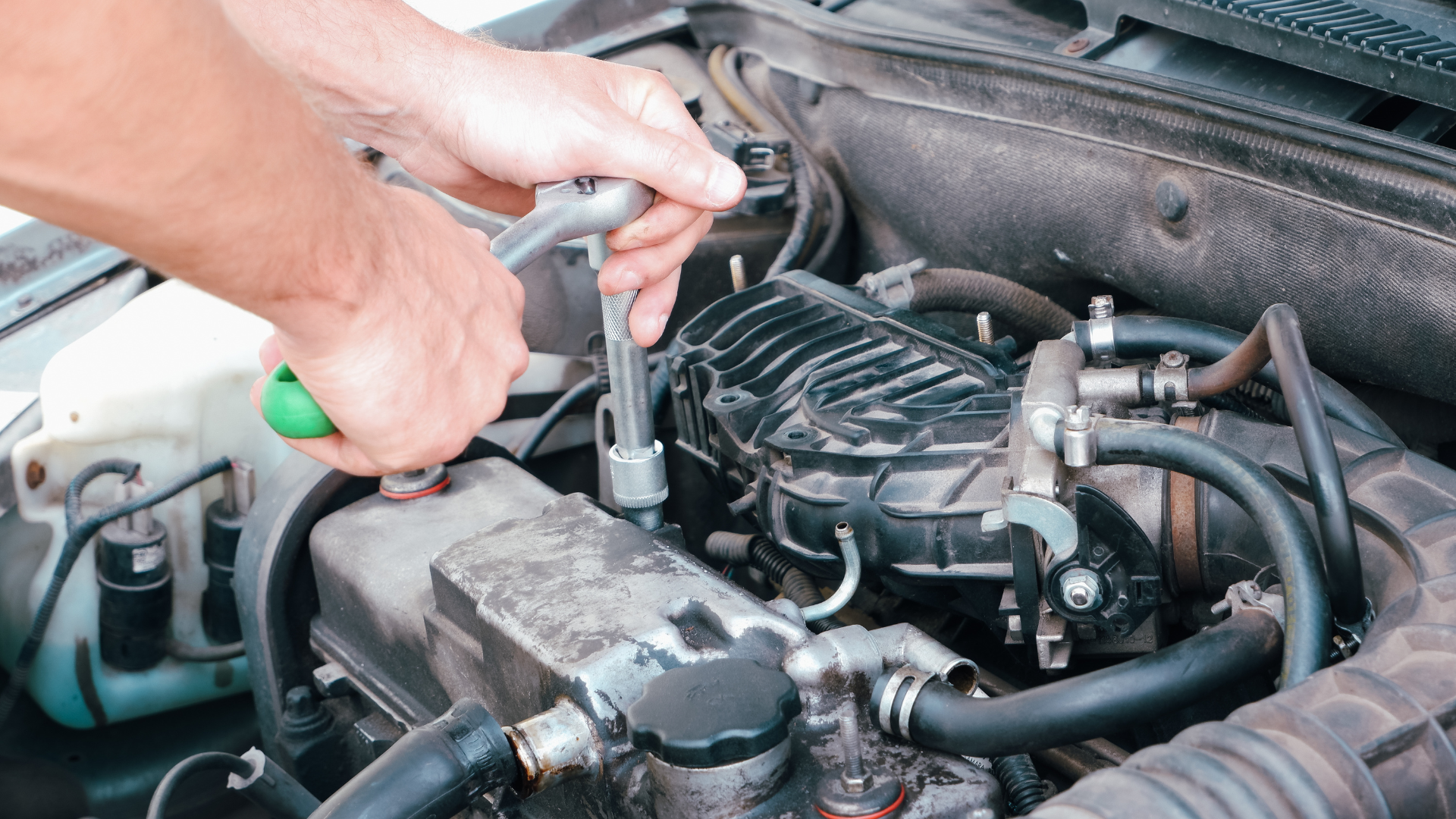10 Signs It's Time for a Clutch Repair

Your car’s clutch is one of its most essential components, and knowing when it needs attention can save you from costly repairs down the line. In this blog, we’ll dive into some of the most telltale signs that signal it might be time to take your car in for a clutch repair.
1. Strange Noises During Clutch Engagement
If you hear unusual sounds when you press or release the clutch, such as grinding or squeaking, it could be a sign that your clutch is wearing out and needs attention. These noises often suggest an issue with the clutch’s pressure plate or release bearings. Ignoring this symptom can lead to more significant issues down the line, including potential damage to the transmission. Regular maintenance can help catch these problems early. Don't wait until it's too late—when these sounds start to appear, it's time to consult with a mechanic. Sudden noises during clutch engagement may indicate a misalignment, which can be easily corrected by a professional technician.
2. Difficulty in Shifting Gears
Trouble shifting gears, whether it feels stiff or just doesn’t seem to engage properly, can indicate a problem with the clutch that needs to be addressed. This issue often arises because the clutch isn’t releasing fully, which can cause grinding noises and excessive wear on gear synchros. Gear changes should be smooth and seamless—anything else could be your car's way of suggesting that the clutch might be at fault. Consistent difficulty in changing gears can also strain other components of the transmission system, leading to even more significant repairs if not attended to promptly. Take it as a signal to consult a trusted mechanic ASAP.
In some cases, the clutch cable might be the culprit, requiring only a simple adjustment. However, if not addressed, minor problems like these can evolve into major issues, affecting the overall health of your vehicle. It's vital to act swiftly at the first sign of trouble. Dramatic changes in shift smoothness can quickly lead to more considerable transmission wear and tear, underscoring the importance of resolving clutch issues promptly. To preserve both performance and safety, don’t ignore these changes—get your clutch examined sooner rather than later.
3. Slipping Clutch
When the clutch slips, you may notice a lack of acceleration despite the engine revving at higher RPMs. This can be a sure sign that your clutch is struggling. A slipping clutch essentially means that the clutch disc is not making sufficient contact with the flywheel. This issue not only leads to a loss of power but can also leave you stranded on the road. Consistent slipping may damage other parts of the clutch assembly, necessitating a comprehensive repair rather than a simple fix. It's best to address the situation immediately to avoid more extensive repairs. Get a professional assessment to gauge what's necessary to stop the slip before it becomes more serious.
4. Spongy or Loose Clutch Pedal
A clutch pedal that feels spongy or loose when pressed could signify that there is an issue with the clutch hydraulic system or linkage. The resistance you expect when pressing the clutch should be firm yet responsive, and any deviations might indicate air in the hydraulic line or a leak. Such problems can often be fixed with a relatively simple bleed of the clutch system or replacement of the hydraulic fluid. However, if not attended to, this issue can escalate, leading to difficulty in gear engagement or even total clutch failure. Have a qualified mechanic analyze these symptoms to determine the necessary repairs and restore normal pedal feel.
Loose or spongy clutch pedals can be deceptive, appearing to function well on occasion before suddenly failing. This inconsistency is a key indicator that something isn't quite right, warranting further inspection. With your clutch's role so central to vehicle operation, ensuring its components work in harmony is essential, not least for your safety. It's always a wise idea to consult a trusted professional who can check all related systems and confirm your vehicle remains safe to drive.
5. Burning Smell
A burning smell, often accompanied by heat, can indicate that the clutch is overheating due to excessive friction or wear and tear, needing immediate attention. This odor can usually be noticed when the clutch slips, signaling that the clutch surface is worn down. Driving with a worn clutch not only increases the risk of failure but can also be dangerous. When left unresolved, these symptoms become warning signs of a failing clutch, drawing drivers close to potential roadside breakdowns. In this scenario, prompt examination and possible replacement of the clutch components by qualified personnel is a prudent step. Don't ignore these olfactory cues—turn them into an opportunity to maintain your vehicle.
The smell is somewhat akin to burning rubber and can pervade the cabin. Regular exposure is a substantial hint that your clutch may be nearing its end of life. An urgent fix is necessary not just to replace worn components, but also to preserve the performance integrity of your vehicle. Seeking professional advice quickly can often prevent more costly future repairs and enhance driving safety. Address the burning smell as soon as it appears to ensure continued clutch performance.
6. Vibrating Clutch Pedal
Feeling vibrations when you press the clutch pedal can be a warning that the clutch assembly is misaligned or damaged. These vibrations, sometimes referred to as clutch judder, arise due to uneven wear or contamination on the clutch disc, leading to an irregular grip when the clutch is engaged. Left unchecked, the vibrations could cause accelerated wear on the clutch components and even damage other connected systems. A vibrating pedal involves an urgent appointment with a specialist to diagnose and correct the issue before more extensive damage ensues.
7. Reduced Clutch Responsiveness
If the clutch does not engage or disengage as it should, or if it feels less responsive, this can indicate underlying issues that need to be checked. Reduced clutch sensitivity can lead to imprecise gear shifts and impaired vehicle control. Often caused by deteriorating clutch components or maladjustment, this symptom signals the urgent need for a thorough inspection. Addressing the problem on time can help prevent additional wear on transmission parts. Regular checks and maintenance ensure clutch performance remains consistent, allowing for seamless driving experiences.
8. Higher Bite Point
A higher bite point, where the clutch engages later than usual, can suggest that the clutch is nearing the end of its lifecycle. This change not only affects driving comfort but can also indicate that clutch wear has progressed significantly. If not rectified, you might soon face difficulty in gear changing and possibly encounter inconvenient breakdowns. Understanding this early can allow for smoother clutch replacements rather than emergency fixes. Prioritize maintenance if your vehicle's clutch is reaching a higher bite point than observed in the past.
9. Hydraulic Fluid Leaks
Noticeable leaks under your vehicle, especially if it’s hydraulic fluid, can hint at problems within the clutch system that require repair. Such leaks not only decrease the efficiency of the clutch system but might also affect various other aspects of the vehicle's operation. Dripping hydraulic fluid reduces pressure in the system and can prevent the clutch from fully disengaging, leading to transmission wear. Quick identification and intervention can prevent further damage, reinforcing the significance of timely clutch servicing. For peace of mind, schedule a brake inspection immediately if leaks are visible.
10. Sudden Jolts or Jerks
Experiencing sudden jerks or jolts when starting or stopping can indicate that your clutch is not functioning as smoothly as it should. These unexpected jolts can disrupt your driving and suggest issues with clutch engagement. Typically stemming from worn or misshapen clutch components, these jerks not only reduce driving comfort but can also lead to more severe wear if ignored. Addressing these glitches early can lead to smoother rides and prolonged vehicle longevity. Don't dismiss these unsettling driving experiences; use them to spring into action and secure prompt clutch care.



